sierraclub.org - sierra magazine - january/february 2011 - mixed media
Planet Kids | Earth Beat
PLANET KIDS
Navigating the minefield of eco-resources for children
Enviro-kid media took off with Dr. Seuss's story of the Lorax, who spoke for the Truffula Trees, and the Once-ler, who ignored him. Since its publication in 1971, The Lorax has spawned countless young Truffula huggers, one nifty iPad app, and plenty of lesser imitations. Few works for children manage to be so charming about a situation so dire. Here are some that inspire kids to save the earth and don't require a chaser of cherry-flavored antidepressants. —Dashka Slater
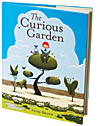 Witness the subversive power of gardening in two picture books about little green thumbs: The Curious Garden (Little, Brown, 2009) by Peter Brown and On Meadowview Street (Greenwillow, 2007) by Henry Cole. Both stories are about greening urban and suburban spaces, and their kid appeal comes from the spectacle of nature subverting the established order. Mary McKenna Siddals's Compost Stew (Tricycle, 2010), an alphabetic recipe for soil-enrichingputrescibles, is full of entertaining ickiness.
Witness the subversive power of gardening in two picture books about little green thumbs: The Curious Garden (Little, Brown, 2009) by Peter Brown and On Meadowview Street (Greenwillow, 2007) by Henry Cole. Both stories are about greening urban and suburban spaces, and their kid appeal comes from the spectacle of nature subverting the established order. Mary McKenna Siddals's Compost Stew (Tricycle, 2010), an alphabetic recipe for soil-enrichingputrescibles, is full of entertaining ickiness.
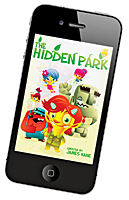 In more innocent times, kids apparently trundled off to the woods like pint-size Thoreaus and learned how much better everything is far away from both cities and grown-ups. Jean Craighead George's classic My Side of the Mountain (Puffin, 1959) tells the story of one such boy living on his own in the Catskill Mountains. If you draw the line at sending the young'uns off into the wilderness alone, try the BBC's 11-part series Planet Earth (2006), which displays the natural world's wonders, and a few of its horrors, in captivating close-up. (Disney's Earth is a distilled 90-minute version.) >The Ways of Knowing Trail, an engaging game from Chicago's Brookfield Zoo, sends kids on a virtual walk through the African rainforest. The Hidden Park iPhone app lures kids outside by sending them on a scavenger hunt for virtual magical creatures in 12 real-life places, including New York's Central Park.
In more innocent times, kids apparently trundled off to the woods like pint-size Thoreaus and learned how much better everything is far away from both cities and grown-ups. Jean Craighead George's classic My Side of the Mountain (Puffin, 1959) tells the story of one such boy living on his own in the Catskill Mountains. If you draw the line at sending the young'uns off into the wilderness alone, try the BBC's 11-part series Planet Earth (2006), which displays the natural world's wonders, and a few of its horrors, in captivating close-up. (Disney's Earth is a distilled 90-minute version.) >The Ways of Knowing Trail, an engaging game from Chicago's Brookfield Zoo, sends kids on a virtual walk through the African rainforest. The Hidden Park iPhone app lures kids outside by sending them on a scavenger hunt for virtual magical creatures in 12 real-life places, including New York's Central Park.
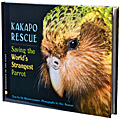 Youngsters need role models, and plenty of good ones can be found in Lynn Hirshfield's Girls Gone Green (Penguin, 2010), which chronicles real-life eco-activism by tween and teen girls, giving a sheen to things like fighting global warming. Young monkey wrenchers take on a chain of pancake restaurants about to pave over owl nests in the movie Hoot (New Line Cinema, 2006), based on the book by the always-delightful Carl Hiaasen. The stunning series Scientists in the Field (Houghton Mifflin) takes kids into the trenches with environmental scientists: They can see herpetologist Tyrone Hayes tracking atrazine's impact on frogs in Pamela Turner's The Frog Scientist (2009), learn about a collaboration between conservation biologists and Filipino villagers in Turner's Project Seahorse (2010), and follow the highs and lows of parrot-repopulation efforts in Sy Montgomery's Kakapo Rescue (2010). Kids who want to get active themselves can start at earthrangers.com or the Defenders of Wildlife–sponsored kidsplanet.org.
Youngsters need role models, and plenty of good ones can be found in Lynn Hirshfield's Girls Gone Green (Penguin, 2010), which chronicles real-life eco-activism by tween and teen girls, giving a sheen to things like fighting global warming. Young monkey wrenchers take on a chain of pancake restaurants about to pave over owl nests in the movie Hoot (New Line Cinema, 2006), based on the book by the always-delightful Carl Hiaasen. The stunning series Scientists in the Field (Houghton Mifflin) takes kids into the trenches with environmental scientists: They can see herpetologist Tyrone Hayes tracking atrazine's impact on frogs in Pamela Turner's The Frog Scientist (2009), learn about a collaboration between conservation biologists and Filipino villagers in Turner's Project Seahorse (2010), and follow the highs and lows of parrot-repopulation efforts in Sy Montgomery's Kakapo Rescue (2010). Kids who want to get active themselves can start at earthrangers.com or the Defenders of Wildlife–sponsored kidsplanet.org.
The best environmental books teach without preaching, and Ted Kooser's picture book Bag in the Wind (Candlewick, 2010) subtly makes a point about wastefulness while following the travels of a windblown plastic bag. The quietly cautionary Wall-E (Pixar, 2008) pairs cute robot antics with the specter of a planet buried in garbage. Annie Leonard's eight-minute film The Story of Bottled Water offers a lesson about manufactured demand that will come in handy when your kids start collecting Pokemon cards.
 It's no fun telling tots that we've overcooked the planet they're inheriting, but apocalyptic visions can still entertain. Debi Gliori's The Trouble With Dragons (Walker, 2008) amusingly blames the planet's predicament on wasteful, overpopulating, fire-breathing dragons and urges children to choose a different path. Climate denial is cleverly and subtly lacerated in Timothee de Fombelle's middle-grade novels Toby Alone and Toby and the Secrets of the Tree (Candlewick, 2010), in which a society of tiny people refuse to believe that the tree they inhabit might be alive—and that sap mining might be killing it. Saci Lloyd's young adult novels The Carbon Diaries 2015 and The Carbon Diaries 2017 (Holiday House, 2009 and 2010) imagine what life would be like for a 16-year-old London punk rocker if extreme weather events spurred the U.K. to impose drastic carbon rationing. Turns out it's hard to rock out when you can't plug in. Kids can get easily digestible facts about global warming at the EPA's climate change kids site.
It's no fun telling tots that we've overcooked the planet they're inheriting, but apocalyptic visions can still entertain. Debi Gliori's The Trouble With Dragons (Walker, 2008) amusingly blames the planet's predicament on wasteful, overpopulating, fire-breathing dragons and urges children to choose a different path. Climate denial is cleverly and subtly lacerated in Timothee de Fombelle's middle-grade novels Toby Alone and Toby and the Secrets of the Tree (Candlewick, 2010), in which a society of tiny people refuse to believe that the tree they inhabit might be alive—and that sap mining might be killing it. Saci Lloyd's young adult novels The Carbon Diaries 2015 and The Carbon Diaries 2017 (Holiday House, 2009 and 2010) imagine what life would be like for a 16-year-old London punk rocker if extreme weather events spurred the U.K. to impose drastic carbon rationing. Turns out it's hard to rock out when you can't plug in. Kids can get easily digestible facts about global warming at the EPA's climate change kids site.
Excerpt From Dashka Slater's The Sea Serpent and Me (Houghton Mifflin Books for Children, 2008):
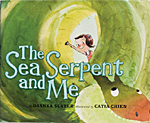 Photo by Lori Eanes
Photo by Lori Eanes
On Tuesday, as I was about to climb into the bath, a sea serpent dropped out of the faucet and into the tub.
He was a very beautiful sea serpent, so small I could hold him in my hands . . .
"How did you get here?" I asked him that night. "Don't sea serpents belong in the sea?"
He told me a tornado had lifted him into the clouds one day. The clouds drifted over green jungles and silvery cities and then rained him down into a lake, where a pipe sucked him up and whooshed him along and splashed him down in my tub.
"Do you miss the sea?" I asked him.
"Of course I do. I belong there."
"Then I'll take you back," I said.
Dashka Slater is the author of three children's books, including The Sea Serpent and Me, and writes frequently for Sierra, Mother Jones, and the New York Times Magazine.
EARTH BEAT
Beauty out of Beasts
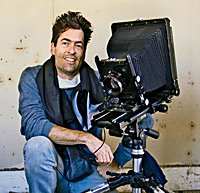 Photo courtesy of Chris Jordan
Photo courtesy of Chris Jordan
Chris Jordan's artfully arranged oil barrels on the cover of this issue of Sierra and the mountains of plastic in "
Beyond Oil" grab you and make you think. So what is it about an artist's take on a dire environmental problem that spurs emotion and even inspiration? We asked Jordan, creator of the photography exhibit
Intolerable Beauty: Portraits of American Mass-Consumption and a collection of digital compositions called
Running the Numbers: An American Self-Portrait, to help us better understand our right brains.
At first I was interested in industrial colors and had no interest in mass consumption. People who saw my work clued me in to the social value. When I photographed a recycling yard, I turned toward a social message.
Running the Numbers uses sleight of hand to draw viewers into a conversation with themselves. Our minds can't comprehend more than a few thousand numbers. From a distance, viewers see an attractive image. Their defenses don't come up until they read the description of the piece.
My work tries to make global issues personal. With Running the Numbers, I wrestle with the tendency of the work to be cold and conceptual.
People can take in Intolerable Beauty in one glance. Every piece in Running the Numbers requires audience engagement.
Year of the Tiger is 3,200 toy tigers, representing the number left on Earth. A giant void in the middle of the image would hold 40,000 of them; that was the global tiger population in 1970. With digital compositions, I see my pieces for the first time when they're finally exhibited.
A giant pile of sawdust, with exquisite fineness. It barely sold.
None of the news images I saw captured the sense of loss. There's something symbolic in belongings scattered around the landscape.
I had seen images of the birds but doubted the veracity of some of them. I wanted the exhibit to be a documentary tool.
We're going back to Midway to photograph and film albatross mating dances and then the birth of 350,000 cute fluffy chicks. There's beauty and renewal. And yet 40 percent of them will die within months with their bodies filled with plastic.
High-end electronics: Macs, printers, digital cameras. —interview by Reed McManus
For information on upcoming exhibits of Running the Numbers, go to chrisjordan.com.
Kids' books photos by Lori Eanes (4); books courtesy of Alexander Book Co., San Francisco; app courtesy of The Hidden Park;